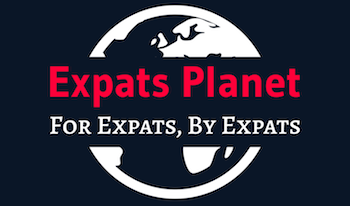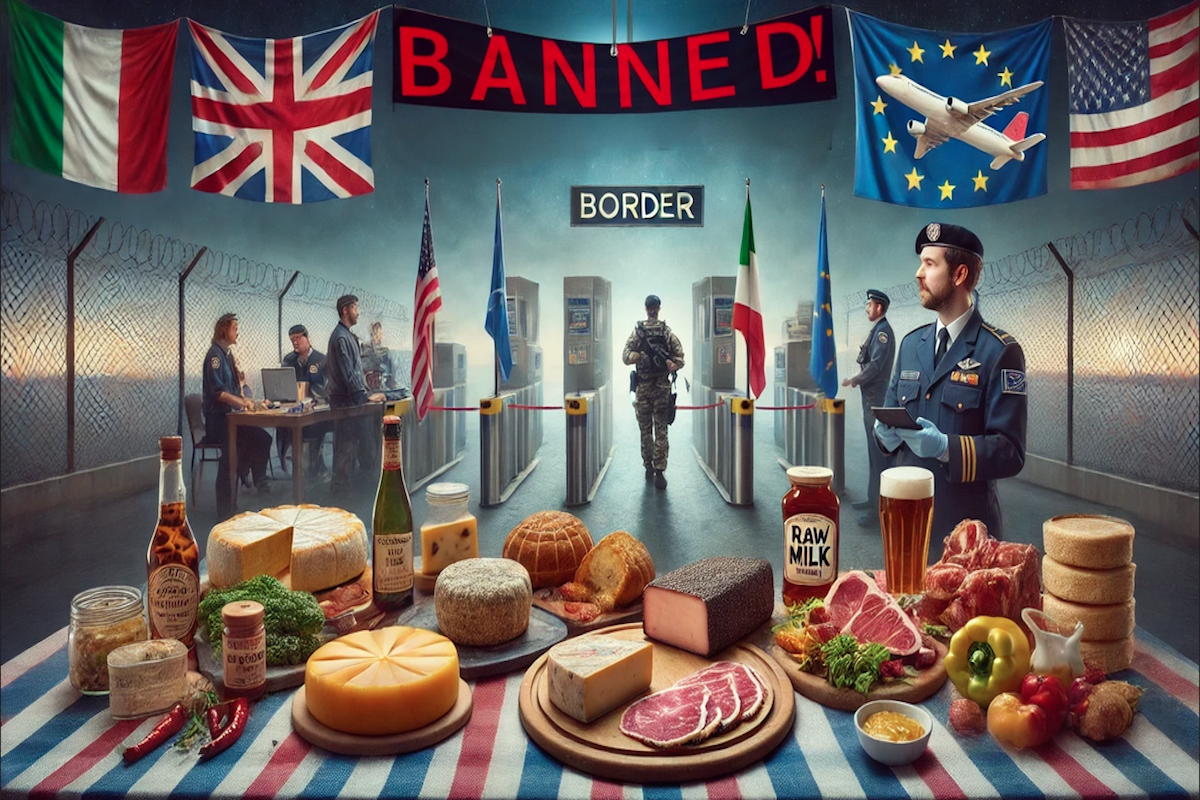Contents
- The Other Side of the Food Fight: Why the U.S. Bans These European Delicacies
- 1. Raw Milk Cheese “Aged to Perfection… But Too Risky to Regulate?”
- 2. Kinder Surprise Eggs “Banned Since 1938… Because of What’s Inside”
- 3. Casu Marzu (Maggot Cheese) “A Cultural Treasure or a Public Health Nightmare?”
- 4. Stilton (Raw Milk Version) “Why the U.S. Says No to the Raw Side of Blue Cheese”
- 5. European Shellfish “Banned for Bacteria… Not for Bias”
- 6. Unpasteurized Fruit Juices “Fresh and Natural… and Full of E. Coli?”
- 7. Haggis (With Sheep Lung) “The Lung Debate: Cultural Pride vs. Contamination Risk”
- 8. European Energy Drinks (Certain Formulas) “Too Much Caffeine, Not Enough Oversight”
- The Real Reason These Foods Are Banned
- Your Turn
- Sources
The Other Side of the Food Fight: Why the U.S. Bans These European Delicacies
When I first moved to Europe, France, specifically, I was ready to embrace the food revolution.
I pictured myself in a sun-drenched Toulouse apartment, grabbing a baguette from the corner boulangerie, one so fresh it hadn’t met a preservative since Marie Antoinette’s head rolled off the guillotine.
Compared to the technicolor cereal aisles of American supermarkets, I assumed Europe was some kind of Whole Foods utopia.
- Cleaner.
- Simpler.
- Smugger (those damn French!).
And honestly? In many ways, it is.
But somewhere between my Polish pierogi phase and my Georgian chacha-induced epiphanies, I started to notice something… odd.
Certain beloved European foods, cherished, celebrated, even legally protected, are straight-up banned in the United States.
Yep. Outlawed!
As in: you try to bring them in, and Customs might look at you like you just tried to sneak plutonium in your suitcase.
And here’s the thing, this isn’t my first time writing about food bans…
Some of you may remember my article “8 Shocking American Foods Banned in Europe and Why You Should Be… Concerned!” where I exposed the chemical circus going on in your favorite snacks.
That one hit a nerve.
People wrote in about their Skittles, their salmon, their existential dread.
But in the spirit of equal opportunity outrage, I figured it was time to flip the script.
It’s easy to laugh at U.S. food bans while sipping espresso under a dangling leg of jamón from a café in Spain.
But, let’s be honest.
Maybe, just maybe, America isn’t the bad guy in this culinary showdown after all.
In fact, some of these bans, I dare say, might actually make sense.
1. Raw Milk Cheese
“Aged to Perfection… But Too Risky to Regulate?”
I still remember biting into a wedge of raw milk Camembert during my first autumn in France.
The rind was earthy, the center oozing like it had just whispered its last creamy breath.
A symphony of bacteria and centuries of tradition wrapped up in one illegal U.S. import.
And yet, if you tried bringing that same cheese back through JFK, TSA would treat it like you were smuggling uranium.
Why? Because in the U.S.A, if it hasn’t been pasteurized and aged for at least 60 days, it’s a public health hazard.
Listeria, they say. E. coli, they warn. And yes, there have been outbreaks.
But I’ve had worse from a sushi platter in JFK airport.
Still, is it worth the risk for raw cheese in a country that sues over yogurt?
2. Kinder Surprise Eggs
“Banned Since 1938… Because of What’s Inside”
When I first moved to France, my local supermarket sold Kinder Surprise Eggs right at kid-eye level, like a shiny chocolate trap for the under-10 crowd.
I bought one out of nostalgia, cracked it open, and there it was: a small plastic capsule holding an even smaller toy that looked like it came from a cereal box circa 1987.
In America, this would be grounds for an arrest.
According to U.S. law, food cannot contain “non-nutritive objects”, which is legalese for “no choking hazards, please.”
The toy inside the egg makes it a banned substance in the States.
To us, it’s an adorable European quirk.
To the FDA, it’s a confectionery death trap for toddlers with strong molars and poor judgment.
3. Casu Marzu (Maggot Cheese)
“A Cultural Treasure or a Public Health Nightmare?”
This one’s from Sardinia, but I first heard about it while talking to a fellow traveler I met in Győr, Hungary.
He was the type of guy who collected “culinary experiences” like other people collect parking tickets.
One night over a few local beers, he told me about casu marzu, a cheese so intense it comes with live maggots wriggling inside.
Live maggots!
At first, I thought he was messing with me. Then he pulled up a photo on his phone, and I nearly threw up the goulash I had for dinner.
In Sardinia, it’s tradition. In the U.S., it’s an automatic no.
Why? Because eating cheese with larvae can result in, you guessed it, parasitic infections.
Even Europe keeps this one at arm’s length, so it’s no wonder the U.S. opted out faster than a vegan at a Texas BBQ.
4. Stilton (Raw Milk Version)
“Why the U.S. Says No to the Raw Side of Blue Cheese”
You can get Stilton in the U.S., but only if it’s pasteurized.
The raw-milk version? Forbidden.
It’s like ordering a gin and tonic and being told you can only have the tonic, because the gin’s been flagged as a public safety hazard.
When I lived in France, the blue cheeses were unapologetically pungent, earthy, and wild.
Meanwhile, in the U.S., blue cheese tends to taste like it was made in a controlled lab environment, probably because it was.
Pasteurization removes the risk… but also a lot of the funk that makes blue cheese, well, blue cheese.
Still, tangle with listeria once, you’ll get why the FDA isn’t hosting a raw Stilton and wine night anytime soon.
5. European Shellfish
“Banned for Bacteria… Not for Bias”
In Spain, I’ve had mussels so fresh they were practically still whispering to each other.
In Albania, I devoured oysters that could’ve starred in a tourism ad.
But try importing those same mollusks to the U.S., and they’ll be detained at the border faster than a counterfeit Rolex.
Why? Because the U.S. has stricter standards for water cleanliness and bacterial levels.
It’s not personal, it’s protocol.
In Europe, if it smells fine, it’s dinner. In the U.S., no lab report, no questionable clam’s casino.
6. Unpasteurized Fruit Juices
“Fresh and Natural… and Full of E. Coli?”
One of the best things about living in Georgia (the country, not the state) was walking through the farmers market and buying a fresh-pressed pomegranate juice for the equivalent of a dollar.
Tart. Cold. Not FDA-approved.
Unpasteurized juice is basically outlawed in the U.S. unless you slap on a warning label that basically reads, “Drink at your own risk” and maybe add in skull and cross bones for good measure.
This isn’t just bureaucratic paranoia, unpasteurized juice has been linked to E. coli, salmonella, and other delightful stomach destroyers.
Unless you’re squeezing it yourself and rolling the E. coli dice, it’s pasteurized or craps in the U.S.
7. Haggis (With Sheep Lung)
“The Lung Debate: Cultural Pride vs. Contamination Risk”
When I lived in Ukraine, I went to a private Burns Night party and met a Scottish expat who had smuggled in canned haggis like it was contraband gold.
Not because he missed the flavor (he didn’t), but because it was authentically fitting for such an occasion.
The irony?
He couldn’t legally get the real version in the U.S.
Since 1971, importing sheep lung for human consumption has been banned in the States.
The reasoning?
Lungs can’t be fully cleaned of stomach fluids during slaughter, making them too risky for approval.
To the Scots, that’s sacrilege.
To the FDA? Just another day at the office preventing digestive revenge stories.
8. European Energy Drinks (Certain Formulas)
“Too Much Caffeine, Not Enough Oversight”
When I was teaching English in Ukraine, one of my students showed up to class wired like a squirrel on espresso.
He’d just chugged some imported Euro energy drink that made Red Bull look like Chamomile sleepytime tea.
The can had ingredients I couldn’t even pronounce, and I used to grade spelling tests.
Some of these drinks exceed U.S. caffeine limits or contain ingredients like yohimbine or taurine in doses that raise FDA eyebrows.
In the EU and other European countries, some formulas are just fine.
In the U.S., they’re chemical cocktails that never made it past the front door.
The Real Reason These Foods Are Banned
It’s tempting to see these bans as proof that America is overly cautious or out of touch.
But the deeper you dig, the more it becomes clear.
The U.S. and Europe just play by different rules.
In Europe, tradition and culture carry serious weight.
In the U.S., it’s liability, traceability, and whether the average person could sue after a bad batch of cheese.
Neither system is perfect, but both are trying to protect the people they serve.
One with generational trust.
The other with spreadsheets, lawyers and lawsuits.
So maybe it’s not about who’s right and who’s paranoid.
Maybe it’s just about priorities.
Your Turn
- Have you tried any of these forbidden European foods while traveling?
- Did they live up to the hype… or leave you running for the nearest bathroom?
- Do you think these bans go too far, or are they a sign of smart regulation?
Drop your stories in the comments!
Sources
- FDA Raw Milk Policy
- Consumer Product Safety Commission
- Healthline on Casu Marzu
- CDC on Cheese Safety
- FDA Import Restrictions
- FDA Juice HACCP Regulations
- USDA Haggis Policy
- FDA on Caffeine in Food

David Peluchette is a Premium Ghostwriter/Travel and Tech Enthusiast. When David isn’t writing he enjoys traveling, learning new languages, fitness, hiking and going on long walks (did the 550 mile Camino de Santiago, not once but twice!), cooking, eating, reading and building niche websites with WordPress.


